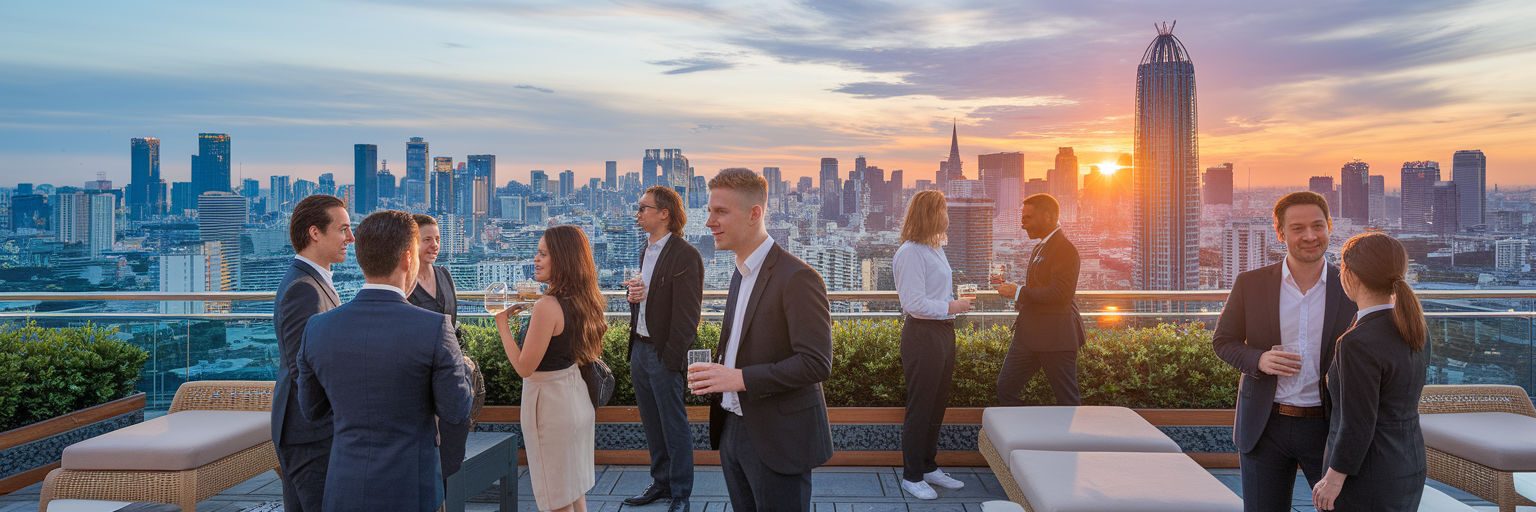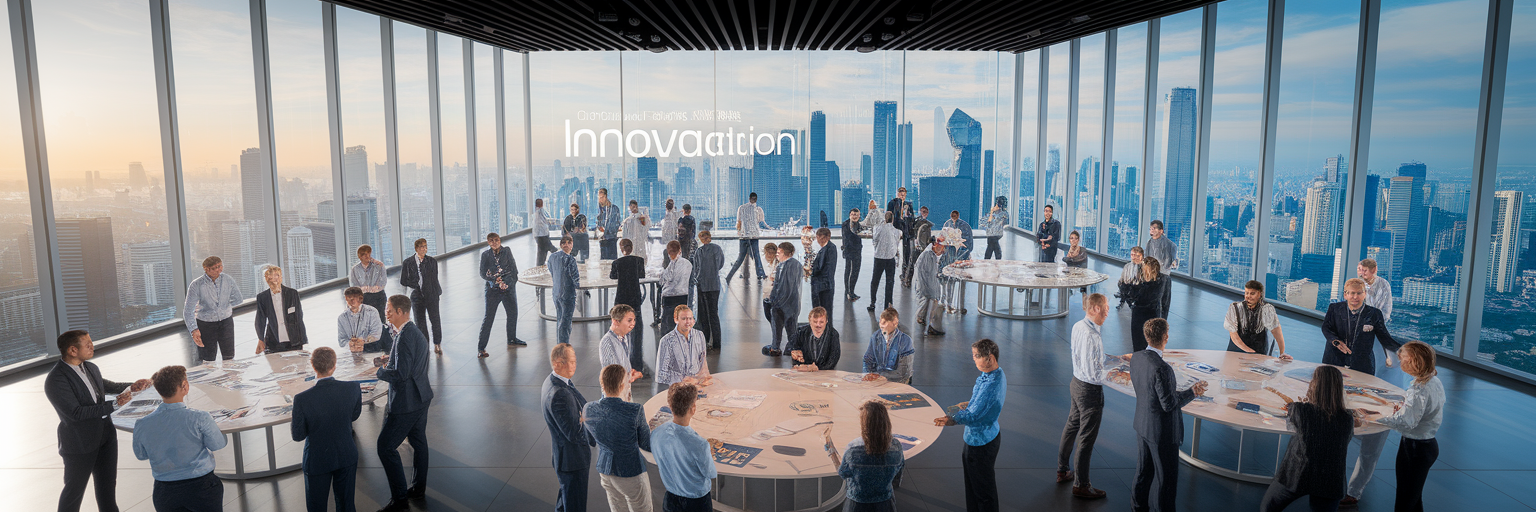Designing APAC Summits as Premier Incentive Travel
Discover how to merge corporate objectives with aspirational travel to create truly motivating MICE events in the APAC region.

Discover how to merge corporate objectives with aspirational travel to create truly motivating MICE events in the APAC region.

The competition for top talent has intensified, and with it, the purpose of corporate gatherings has fundamentally changed. Companies are realizing that a standard conference filled with back-to-back presentations no longer justifies the investment. The most effective APAC summits are now designed as aspirational incentive travel, transforming a traditional cost center into a powerful tool for retention and motivation.
This pivot is a direct response to a workforce that values connection and purpose over obligation. After years of virtual meetings, the appetite for generic events is gone. Instead, employees and partners seek meaningful engagement that makes them feel valued. An incentive-first model turns the summit into a reward, a tangible expression of the company's appreciation. This approach forges a stronger emotional connection, reinforcing the link between integrated events and brand loyalty. By designing engaging corporate summits that people genuinely want to attend, businesses see a direct return in loyalty, collaboration, and a deeper connection to the brand’s mission.
The era of obligatory, content-heavy meetings is being replaced by curated experiences designed to motivate and reward. This isn't just a trend; it's a strategic response to post-pandemic event fatigue and the fierce competition for talent. Why would your best people fly across the region for something they could watch on a screen? They won't. They will, however, travel for an experience that feels exclusive, enriching, and personally valuable.
Framing a summit as an incentive trip fundamentally changes its perception. It ceases to be a corporate mandate and becomes a coveted prize. This shift in mindset is crucial. When attendees feel rewarded, their engagement skyrockets. They are more open to new ideas, more willing to connect with colleagues, and more likely to return to their roles with renewed energy and loyalty. This strategic pivot turns a line item on the budget into a high-return investment in your most important asset: your people. The goal is no longer just to inform, but to inspire and connect on a human level.

Authentic cultural immersion is what separates a memorable trip from a forgettable one. For corporate event planning in Thailand, this means moving beyond the surface-level tourist activities. Anyone can book a standard dinner cruise. A truly exceptional summit offers experiences that attendees couldn't find on their own, creating what we call 'un-googleable' moments.
Instead of a generic welcome dinner in a hotel ballroom, imagine a private, curated street food tour through Bangkok's Old Town, led by a culinary historian who unveils the stories behind each dish. Picture a team-building session that isn't a game, but a hands-on workshop with local artisans in Chiang Mai, where your team learns the ancient craft of pottery or textile weaving. These are the moments that stick. They demonstrate a level of thought and care that reflects positively on your brand.
These cultural integration events in APAC are not just add-ons; they are the core of the incentive experience. They provide a genuine reward and create a profound, positive association with both the company and the destination. When planned with local insight, these activities are particularly impactful, making a well-planned summit in Bangkok an unforgettable experience that resonates long after everyone has returned home.
Technology at events should be an invisible hand that guides and enhances, not a distracting gimmick. The goal is to use it to foster human connection and deepen immersion, not replace it. Forget about flashy novelties; the real value lies in purposeful applications that make the experience smoother and more meaningful.
Consider an AI-powered matchmaking platform. Before the event, it analyzes attendee profiles, business goals, and stated interests to suggest strategic networking connections. This transforms random coffee break encounters into pre-qualified, valuable conversations. It’s like having a personal networking concierge for every guest. Another powerful tool is augmented reality (AR) for cultural enrichment. Imagine an AR-guided tour of Ayutthaya's historic ruins, where the event app overlays digital reconstructions of ancient temples onto the present-day view, bringing history to life right before your eyes.
The best technology feels like a natural extension of the premium, curated experience. It works in the background to remove friction and create moments of wonder. This approach aligns with the core principles of using digital experiences to create emotions and drive engagement. It serves the event's narrative, helping to build connections and create lasting memories without ever being the center of attention.

The traditional one-to-many keynote format is dying. Passive listening leads to passive engagement. To create truly effective MICE events in Thailand and across APAC, you must design dynamic, participatory sessions that blend business objectives with the collaborative spirit of an incentive trip. The question to ask is: how can we make learning active and networking natural?
Propose innovative workshops that are directly relevant to your business and the region. For example, a 'Sustainability Innovation Lab' could challenge teams to develop solutions for a real-world environmental issue affecting Southeast Asia, turning a business goal into a hands-on, competitive challenge. A 'Leadership Masterclass' could incorporate mindfulness and resilience principles taught by local wellness practitioners, offering skills that are both professionally and personally valuable. You could even design a gamified exploration, like a business-focused scavenger hunt through Singapore's financial district, where teams complete challenges tied to your company's strategic pillars.
This shift toward interactivity is not just about fun. As research from events like the Data Innovation Summit APAC shows, active participation drives better knowledge retention and fosters genuine camaraderie. When people solve problems together, they build relationships that last far beyond the event itself.
| Factor | Traditional Conference Format | Incentive-Driven Interactive Format |
|---|---|---|
| Content Delivery | Passive listening (keynotes, panels) | Active participation (workshops, labs) |
| Networking | Random, unstructured coffee breaks | AI-matched strategic meetings |
| Team Building | Forced, often generic activities | Collaborative, goal-oriented challenges |
| Key Outcome | Information dissemination | Actionable insights and team cohesion |
Note: This table contrasts the passive nature of conventional conference structures with dynamic, incentive-driven formats designed to maximize both business outcomes and attendee motivation.
In our connected world, it's a reality that not all key stakeholders can travel. Successful hybrid conference models in Asia address this without diminishing the value of the in-person experience. The secret is to stop thinking of the virtual component as a simple live stream and start designing it as a distinct, exclusive experience in its own right.
Instead of just broadcasting main-stage content, create virtual-only offerings. This could include behind-the-scenes interviews with speakers, specialized digital workshops tailored to a remote audience, or a dedicated virtual host who curates content and facilitates exclusive networking sessions. Think of it as a VIP backstage pass for your remote team. High-quality streaming platforms are essential, enabling remote attendees to participate actively in Q&A sessions, live polls, and dedicated virtual lounges where they can connect with both in-person and other remote guests.
This approach is being successfully implemented by forward-thinking organizers, as seen with events like the DFRWS APAC 2025 in Seoul, which combines onsite and virtual participation to broaden its reach. By treating the virtual component with the same level of care and creativity, you ensure inclusivity while preserving the aspirational, can't-miss nature of being there in person.
The success of an incentive-first summit cannot be captured by simple post-event surveys asking if attendees enjoyed the coffee. The true value is measured by its long-term impact on your business. This "Return on Experience" is tracked through strategic metrics that reflect tangible outcomes.
To properly gauge success, focus on these key performance indicators:
By thoughtfully blending business objectives with immersive cultural experiences and purposeful technology, you transform your APAC summit from a corporate obligation into a powerful engine for growth. Ultimately, the success of such an event depends on expert execution, which is why many companies choose to work with us to bring these complex visions to life.